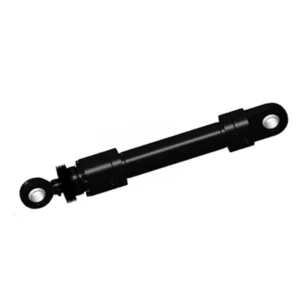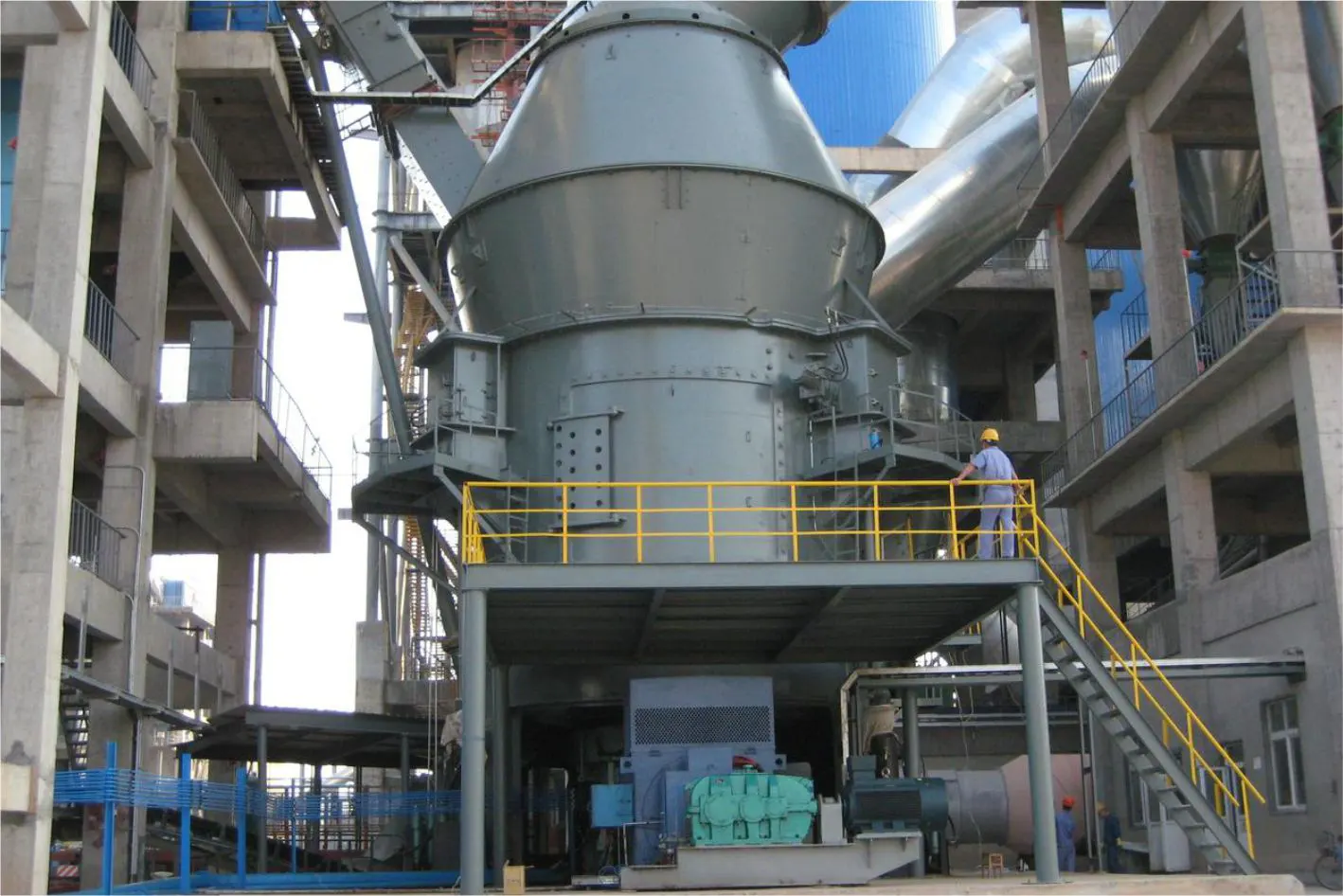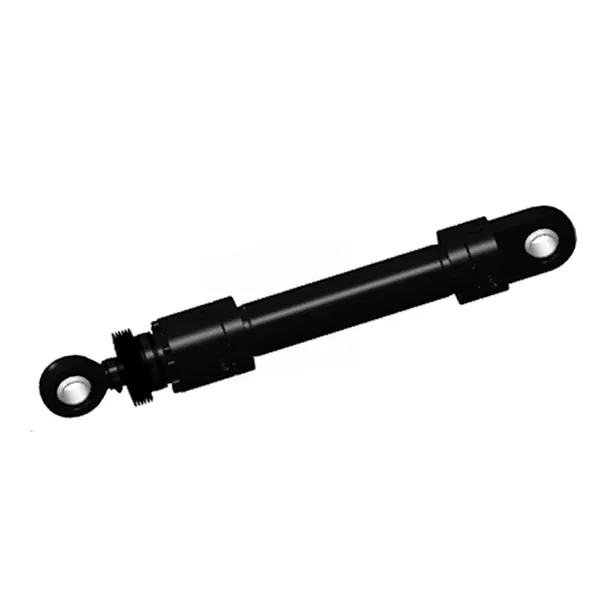Cement Equipment Feeding Cylinder
Jako jeden z producentów, dostawców i eksporterów produktów mechanicznych, oferujemy cylindry hydrauliczne i wiele innych produktów.
Prosimy o kontakt w celu uzyskania szczegółowych informacji.
Poczta:sales@hydraulic-cylinders.net
Producent dostawca eksporter siłowników hydraulicznych.
Cement Equipment Feeding Cylinder

The cement equipment feeding cylinder is a vital component in cement production, specifically designed to enhance efficiency and precision during the feeding process. This specialized cylinder plays a crucial role in cement plants, enabling controlled and accurate feeding of raw materials into the cement manufacturing machinery.
The cement equipment feeding cylinder is an indispensable component in cement production, enhancing efficiency and precision during the feeding process. With its robust construction, precise control, adjustable stroke length, and reliable sealing mechanism, this cylinder ensures accurate and consistent material flow, contributing to optimized cement manufacturing operations. By following the recommended usage methods and maintenance practices, operators can maximize the performance and longevity of the cement equipment feeding cylinder, ultimately improving the efficiency, productivity, and quality of cement production.
Cement Equipment Feeding Cylinder Key Characteristics:
- Robust Construction:
- The cement equipment feeding cylinder is constructed with high-quality materials to ensure durability and longevity in demanding cement plant environments.
- It can withstanding heavy loads and the rigors of continuous operation without compromising performance.
- Precise Control:
- This cylinder is designed to provide precise control over the feeding process, allowing for accurate and consistent material flow.
- It enables operators to maintain optimal feeding rates, improving efficiency and product quality.
- Adjustable Stroke Length:
- The cement equipment feeding cylinder offers adjustable stroke length, allowing flexibility in the volume of material delivered during each feeding cycle.
- Operators can fine-tune the stroke length based on specific production requirements and material characteristics.
- Reliable Sealing Mechanism:
- The cylinder incorporates a reliable sealing mechanism that prevents leakage and ensures a consistent feeding process.
- It minimizes material wastage and promotes a clean and efficient production environment.
Cement Equipment Feeding Cylinder Parameter:
| Product Name | Cement Equipment Feeding Cylinder |
| Features: | Promote the reciprocating movement of the grate bed of the grate cooler |
| Bore diameter: | 80mm~140mm |
| Rod diameter: | 45mm~80mm Stroke: ≤1200mm |
| Thrust force: | Max 385KN (Cylinder diameter 140mm/pressure 25MPa) |
| Cement Equipment Feeding Cylinder Applications: | Cement Equipment |
Rod diameter: 45mm~80mm
Stroke: ≤1200mm
(Cylinder diameter 140mm/pressure 25MPa)
Cement Equipment Cylinder Factory:

Usage Method Of Cement Equipment Feeding Cylinder:
- Installation:
- Follow the manufacturer’s guidelines to securely install the cement equipment feeding cylinder into the cement manufacturing machinery.
- Ensure proper alignment, attachment, and integration with the feeding system.
- Adjustment:
- Adjust the stroke length of the cylinder according to the desired feeding volume and rate.
- Refer to the manufacturer’s instructions for specific adjustment mechanisms and settings.
- Material Loading:
- Load the desired raw materials into the feeding system, ensuring they are correctly positioned for smooth and uninterrupted feeding.
- Avoid overloading the system, as it can adversely affect the performance and efficiency of the cement equipment feeding cylinder.
- Activation and Control:
- Activate the feeding system, engaging the cement equipment feeding cylinder to initiate the material flow.
- Use the control panel or interface to regulate the feeding process, adjusting the stroke length and speed as necessary.
How Do Hydraulic Cylinders Work?
Hydraulic cylinders are mechanical devices that use the power of hydraulic fluid to generate force and facilitate linear motion. They are commonly used in various applications, ranging from construction equipment to industrial machinery. Here’s a simplified explanation of how hydraulic cylinders work:
- Basic Components:
- Cylinder Barrel: It is the main body of the hydraulic cylinder, housing the piston and other internal components.
- Piston: A cylindrical component that divides the cylinder barrel into two chambers.
- Piston Rod: Connected to the piston, it extends outside the cylinder barrel and transmits the force generated.
- Seals: These prevent hydraulic fluid leakage between the piston and cylinder barrel, ensuring efficient operation.
- Hydraulic System:
- A hydraulic system comprises a hydraulic pump, control valves, and hydraulic fluid (typically oil).
- The hydraulic pump pressurizes the fluid, creating hydraulic energy that can be used to generate force.
- Two Chambers:
- The hydraulic cylinder has two chambers: the rod side (or pressure side) and the opposite side (or return side).
- The rod side is connected to the hydraulic pump, while the opposite side is connected to a reservoir or return line.
- Operation:
- When hydraulic fluid is pumped into the rod side chamber, it applies pressure on the piston, causing it to move outward.
- As the piston moves, it pushes the piston rod, generating linear force.
- Simultaneously, the hydraulic fluid from the opposite side chamber returns to the reservoir or through the return line.
- Directional Control:
- The direction of movement of the hydraulic cylinder can be controlled using directional control valves.
- These valves regulate the flow of hydraulic fluid to the appropriate chamber, determining the direction of piston movement.
- Force and Speed Control:
- The force generated by the hydraulic cylinder depends on the hydraulic pressure and the effective area of the piston.
- By adjusting the hydraulic pressure, the force output can be controlled.
- The speed of the cylinder’s movement can be regulated by adjusting the flow rate of hydraulic fluid into or out of the cylinder.
- Applications:
- Hydraulic cylinders are used in various applications that require linear force and motion, such as lifting, pushing, pulling, and bending.
- They are commonly found in construction equipment, material handling machinery, manufacturing systems, and automotive applications.
Możliwości i pojemność fabryki:
(1) Montaż
Dysponujemy najwyższej klasy niezależną platformą badawczo-rozwojową. Warsztat produkcji siłowników hydraulicznych posiada cztery półautomatyczne linie montażowe siłowników podnoszących i jedną automatyczną linię montażową siłowników przechyłu, o projektowanej rocznej zdolności produkcyjnej 1 miliona sztuk. Specjalny warsztat cylindrów jest wyposażony w różne specyfikacje półautomatycznego systemu montażu czyszczącego o projektowanej rocznej zdolności produkcyjnej 200 000 i wyposażony w słynny sprzęt do obróbki CNC, centrum obróbcze, specjalny sprzęt do precyzyjnej obróbki cylindrów, robot spawalniczy, automatyczna maszyna czyszcząca, automatyczna maszyna do montażu cylindrów i automatyczna linia produkcyjna do malowania. Istniejący krytyczny sprzęt składa się z ponad 300 zestawów. Optymalna alokacja i efektywne wykorzystanie zasobów sprzętowych zapewniają wymagania dotyczące dokładności produktów i spełniają potrzeby wysokiej jakości produktów.


(2) Obróbka
Warsztat obróbki skrawaniem jest wyposażony w niestandardowe centrum tokarskie z pochyloną szyną, centrum obróbcze, szybkobieżną honownicę, robota spawalniczego i inny powiązany sprzęt, który może obsługiwać przetwarzanie rur cylindrycznych o maksymalnej średnicy wewnętrznej 400 mm i maksymalnej długości 6 metrów.

(3) Spawanie

(4) Malowanie i powlekanie
Z małymi i średnimi automatycznymi liniami do powlekania farbami na bazie wody, w celu osiągnięcia automatycznego załadunku i rozładunku robota oraz automatycznego natryskiwania, wydajność projektowa 4000 sztuk na zmianę;
Posiadamy również półautomatyczną linię do produkcji farb do dużych cylindrów napędzaną łańcuchem napędowym, o wydajności 60 skrzyń na zmianę.


(5) Testowanie
Dysponujemy najwyższej klasy urządzeniami kontrolnymi i stanowiskami testowymi, aby zapewnić, że wydajność cylindra spełnia wymagania.

We are one of the best hydraulic cylinder manufacturers. We can offer comprehensive hydraulic cylinders. We also provide corresponding przekładnie rolnicze. Eksportowaliśmy nasze produkty do klientów na całym świecie i zdobyliśmy dobrą reputację dzięki najwyższej jakości produktów i usług posprzedażnych. Zapraszamy klientów w kraju i za granicą do kontaktu z nami w celu negocjacji biznesowych, wymiany informacji i współpracować z nami!
Zapraszamy na wycieczkę po naszej fabryce VR:
Wybierz się na wycieczkę po naszej fabryce VR z następującymi elementami
Jak działa siłownik hydrauliczny wózka widłowego?
Siłownik hydrauliczny Zastosowanie:


